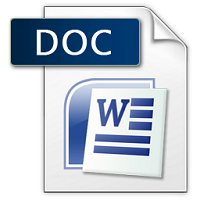Original price was: ₹500.00.₹299.00Current price is: ₹299.00.
Note – Scroll down and match your questions
Note- Unique Ready to Upload
700 per assignment
Unique order via whatsapp only
Whatsapp +91 8791490301
Description
Corporate Finance
Jun 2025 Examination
Q1. Atlas Auto Components, a manufacturer of premium car accessories, reported total revenue of Rs.42,00,000 in the past financial year. The company produced and sold 21,000 units of its flagship product, high-performance car seat covers. The cost structure for the year was as follows:
– Raw Materials: Rs.7,20,000
– Labour Costs: Rs.11,40,000
– Manufacturing Overheads: Fixed: Rs.2,10,000Variable: Rs.1,75,000
To expand its market reach, Atlas Auto Components also spent Rs.1,80,000 on advertising and sales promotions, which are categorized as fixed expenses. Additionally, the company has an outstanding loan of Rs.18,00,000, borrowed at an interest rate of 7.5%.
Required:
Based on the above information, calculate the Degree of Operating Leverage (DOL), Degree of Financial Leverage (DFL), and Degree of Total Leverage (DTL) to assess the company’s financial risk and operational efficiency.
Comment on its financial position based on the Leverages. (10 Marks)
Ans 1.
Introduction
Leverage is a fundamental concept in corporate finance used to measure the sensitivity of a company’s earnings to changes in sales or cost structures. For Atlas Auto Components, a manufacturer of high-performance car seat covers, understanding leverage is critical to evaluating both financial risk and operational efficiency. Leverages help management assess how fixed costs—whether operational or financial—affect the company’s profitability. There are three types of leverage that provide insight into different aspects of business performance: operating leverage, financial
Fully solved you can download
ASSIGNMENTS JUNE 2025
- Fully Solved, High Quality
- Lowest Price Guarantee: Just ₹299 per Assignment!
- 100% Original & Manually Solved (No AI/ChatGPT!)
Hurry! Last Date: 29 May 2025
- Order Now: com/online-buy-2/
Quick Response Guaranteed!
For Unique Assignment please contact on
- WhatsApp: 8791490301
- [email protected]
- aapkieducation.com
Q2. NovaTech Solutions Pvt. Ltd., a technology infrastructure company, is planning a large-scale expansion by setting up an advanced AI-driven manufacturing facility. The estimated capital requirement for the project is Rs.750 crores. The management is evaluating whether to raise the funds through debt, equity, or a combination of both.
Company’s Current Financial Position:
– Existing Equity Base: Rs.1,200 crores
– Existing Debt: Rs.1,440 crores
– Current Debt-Equity Ratio: 1.2:1
– Maximum Acceptable Debt-Equity Ratio: 2:1
– Current Return on Equity (ROE): 27%
– Cost of Debt: 9%
– Earnings Before Interest and Taxes (EBIT): Rs.600 crores
– Corporate Tax Rate: 30%
The company is considering three possible funding strategies:
- Full Debt Financing: Raising the entire Rs.750 crores through debt.
- Full Equity Financing: Issuing new shares worth Rs.750 crores.
- Hybrid Approach: Raising Rs.450 crores through debt and Rs.300 crores through equity.
Maximum Acceptable Debt-Equity Ratio: 2:1.
Advise on the best way to finance it discussing on each option w.r.t. its advantages and disadvantages. (Hint: Consider impact profitability and any other ratios as may be appropriate) (10 Marks)
Ans 2.
Introduction
NovaTech Solutions Pvt. Ltd., a technology infrastructure firm, is planning a strategic expansion by establishing an advanced AI-driven manufacturing facility. With a projected capital requirement of Rs.750 crores, the company is evaluating whether to raise funds through debt, equity, or a combination of both. Given its current financial position and defined debt-equity threshold, choosing the right financing mix is critical. Each funding approach carries different implications on profitability, capital structure, ownership dilution, and financial risk. By analyzing the impact of full debt financing, full equity financing, and a hybrid model, the company aims to determine the most efficient and sustainable path forward. This decision will directly influence NovaTech’s long-term growth, investor confidence, and
Q3 (A) ABC Ltd., a consumer electronics company, has provided the following financial details for the year ending 2024:
– Current Assets: Rs.12,00,000
– Current Liabilities: Rs.6,00,000
– Cash & Cash Equivalents: Rs.1,80,000
– Inventory: Rs.3,00,000
– Net Credit Sales: Rs.24,00,000
– Accounts Receivable: Rs.4,00,000
Required: Calculate any the below Liquidity ratios and briefly comment on the company’s liquidity position:
- Current Ratio
- Quick Ratio (Acid-Test Ratio)
- Accounts Receivable Turnover Ratio (5 Marks)
Ans 3a.
Introduction
Liquidity ratios are key financial metrics used to evaluate a company’s short-term financial health and its ability to meet current obligations. ABC Ltd., a consumer electronics company, has provided critical data on assets, liabilities, and receivables to assess its liquidity position. By calculating the Current Ratio, Quick Ratio, and Accounts Receivable Turnover Ratio, stakeholders can analyze how efficiently the company manages its working capital and receivables. These ratios
Q3 (B) Sancha House is putting up a new Ice Cream Factory whose initial cost is Rs. 300,000. It expects to get inflows of Rs. 154000, Rs. 155,000, Rs. 175,000, Rs. 182,000 and Rs. 198,000. Cost of borrowing for this project is 11%. Calculate the NPV and decide whether it is a good proposal to invest in. (5 Marks)
Ans 3b.
Introduction
Sancha House is planning to set up a new ice cream factory, which involves a significant initial investment. To evaluate the project’s financial feasibility, the company must assess its future cash inflows against the initial cost, using Net Present Value (NPV) as the primary decision-making tool


